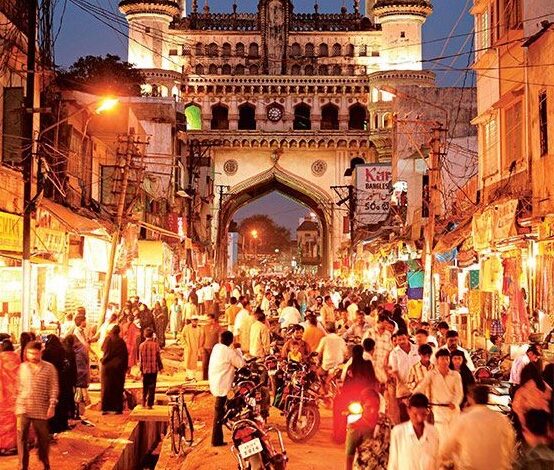India is now world’s most populous country suggests UN data. It is the first time that India’s population has overtaken China’s since 1950

Experts said India’s young population in a consumer-driven economy will be a major factor in driving the country’s development. India is now the most populous country in the world with 2.9 million more people than China, according to the latest data from the United Nations Population Fund (UNFPA).
KEY FACTS
- India’s estimated population by mid-2023 will stand at 1,428.6 million compared to China’s 1,425.7 million, according to the United Nations Population Fund’s (UNPFA) “State of World Population Report.”
- The exact date of when the shift is unclear, but a UNPFA spokesperson told the Hindustan Times that this may have already happened.
- The spokesperson added that China’s population peaked in late 2022 and has been declining since, while India’s population continues to grow.
- Forbes has contacted the agency for comment.
- India’s population is not only larger than China, but also a lot younger, with 25% being in the 0-14 age group, 18% in the 10-19 group and 26% in the 10-24 group, compared to 17%, 12% and 18% respectively for China.
- With an estimated population of 340 million, the United States comes in at a distant third place.
The UNFPA’s ‘The State of World Population Report, 2023’, titled ‘8 Billion Lives, Infinite Possibilities: The Case for Rights and Choices’ released on 19th April said India’s population is 1,428.6 million while China’s stood at 1,425.7 million, a difference of 2.9 million.The latest figures were given under the category of ‘Demographic Indicators’ in the report.It is the first time that India’s population has overtaken China’s since 1950 when the UN began to collect and release population data.
“Yes, though it is unclear exactly when the crossover took place and direct comparisons can be hard due to the slightly different timings of countries’ individual data collection,” Anna Jefferys, media and crisis communications advisor, UNFPA, said in an email when asked whether India’s population has surpassed China’s.“What we can say is that China’s population reached its peak last year and started to decline and that while India’s population is growing, its rate of population growth has been declining since 1980,” Jefferys said.
The UNFPA report said 25% of India’s population is in the age group of 0-14, 18% in 10-19, 26% in the 10-24, 68% in 15-64, and 7% above 65.
The corresponding figures for China are 17%, 12%, 18%, 69%, and 14%, which means the country has nearly 200 million above the age of 65.
China is doing better than India in the context of life expectancy, which in the case of women is 82 and 76 that of men. The figures for India are 74 and 71, according to the report.
Experts said India now has a demographic advantage. “Its young population in a consumer-driven economy will be a major factor in driving the country’s development, and presents an enormous opportunity for the country’s economic growth,” said Andrea Wojner, UNFPA’s India representative.
“The country will not just enjoy an abundant supply of labour from this working age cohort, but the rising domestic consumption should help the nation tide over any external shocks, a fact well demonstrated during the Covid-19 pandemic.”
Chinese demography expert Huang Wenzheng said India’s advantage is that it is still growing even as it is slower than before.“But the key is not whether the total population of India has surpassed that of China but India now has more than twice as many new babies as China with a total fertility rate about twice as much as China’s, which means that India’s population will be much bigger than China’s in the long run,” said Huang, a researcher at the Beijing-based Centre for China and Globalisation.
Huang said India has a much bigger demographic strength than China. “…it can be translated into comparative strengths on many other fronts as well if India can take advantage of it.”India’s demographic diversity among states also provides unique opportunities to reap the benefits of demographic dividends. Different states are at various stages of demographic transition.“For example, an ageing population in southern India can meet its labour demands from the greater proportion of the youthful population in the northern and eastern parts of the country through conducive policies on inter-state migration,” Wojner said.
China’s population decreased by 850,000 people in 2022, the first such decline since 1961.
The number of births in China did not increase as expected since Beijing abolished the one-child policy and then allowed even three children. Primary reasons include rising costs of living, childcare, and education.
“There is no perfect population number for either country, but more important is how India and China can support their populations,” Jefferys said.
Overall, the UNFPA report called for a “radical rethink” of how population numbers are framed. It urged politicians and media to abandon overblown narratives about population booms and busts.
“Instead of asking how fast people are reproducing, leaders should ask whether individuals, especially women, are able to freely make their own reproductive choices – a question whose answer, too often, is no,” the UNFPA said in a statement released along with the report.
“Women’s bodies should not be held captive to population targets,” said UNFPA executive director Natalia Kanem.“To build thriving and inclusive societies, regardless of population size, we must radically rethink how we talk about and plan for population change.”
(This story has not been edited by News Mania staff and is published from a Media Release)






